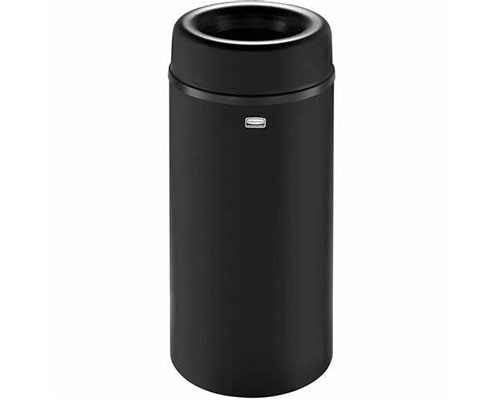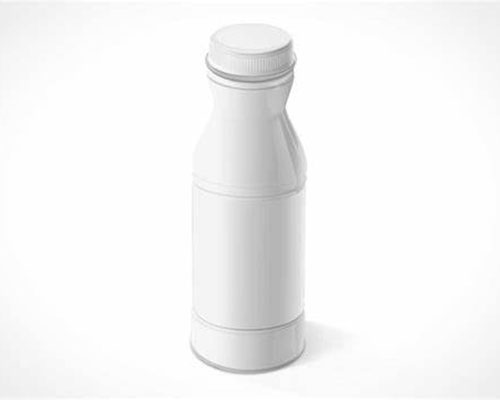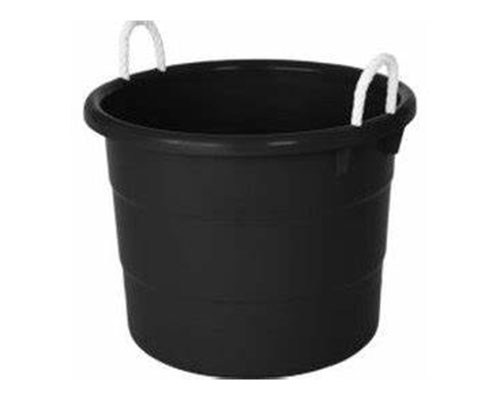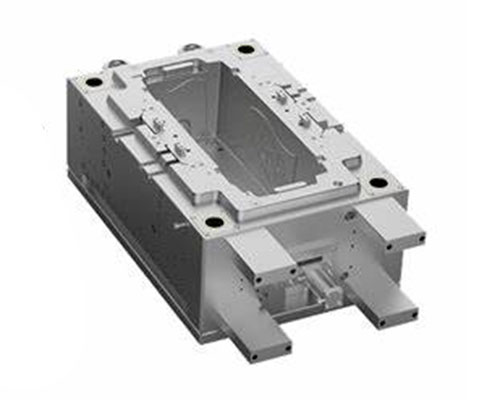Prototyping and Manufacturing Application in Beverage parts Industries
Innovative Rapid Prototyping & Mass Production for Beverage Makers: Streamline your beverage production with Yigu Technology’s cutting-edge solutions—from rapid prototyping to high-volume manufacturing.
Key Benefits:
✔ ✅Faster Time-to-Market – Accelerate product development with rapid prototyping.
✔ ✅Cost-Effective Scaling – Seamlessly transition from prototypes to mass production.
✔ ✅Precision & Consistency – High-quality manufacturing for beverages and packaging.
✔ ✅Custom Solutions – Tailored processes for unique beverage industry needs.
Ideal for: Beverage brands, packaging suppliers, and manufacturers seeking speed, efficiency, and scalability.
Upgrade your production—contact Yigu Technology today!
1. Introduction to Rapid Prototyping and Mass Production in Beverage Industry
1.1 Definition of Rapid Prototyping
Rapid prototyping is a group of techniques used to quickly fabricate a scale model of a physical part or assembly using three-dimensional computer-aided design (CAD) data. In the beverage industry, this technology allows for the creation of prototypes of beverage containers, packaging components, and even production equipment parts. For instance, a beverage company can use 3D printing, a common rapid prototyping method, to produce a prototype of a new bottle design within hours. This prototype can then be tested for functionality, such as checking how well it holds the beverage and how easy it is to open. The key advantage here is the speed at which ideas can be turned into tangible objects for testing and refinement, significantly reducing the time from concept to production compared to traditional prototyping methods.
1.2 Importance of Mass Production
Mass production in the beverage industry is essential for meeting the high demand of consumers worldwide. It involves the large-scale manufacturing of beverage products and their packaging components. For example, a popular soft drink brand may need to produce millions of bottles per day to supply supermarkets, restaurants, and vending machines. Efficient mass production processes ensure that these products are made consistently and at a low cost per unit. This is achieved through the use of specialized machinery and assembly lines that can operate continuously. In addition, mass production allows for economies of scale, where the cost per unit decreases as the volume of production increases. This not only makes the beverage products more affordable for consumers but also helps beverage companies achieve higher profit margins. Moreover, mass production enables the rapid distribution of new beverage products to the market, allowing companies to quickly respond to changing consumer preferences and trends.
2. Rapid Prototyping Techniques in Beverage Packaging
2.1 3D Printing for Bottle Design
3D printing has revolutionized the way beverage companies approach bottle design. In the beverage industry, the aesthetics and functionality of bottles are crucial for attracting consumers and ensuring product integrity. With 3D printing, designers can create highly detailed and customized bottle prototypes in a matter of hours. For example, a beverage company can use 3D printing to produce a prototype of a new bottle with unique ergonomic features or an innovative shape that stands out on the shelf. According to a study by XYZ Research, 3D printed bottle prototypes can reduce the design iteration time by up to 70% compared to traditional methods. This is because designers can quickly make adjustments to the CAD model and print a new prototype to test different aspects such as grip comfort, ease of pouring, and compatibility with labeling processes. Moreover, 3D printing allows for the use of various materials that can simulate the properties of the final production material, enabling accurate performance testing of the bottle design.
2.2 Injection Molding Prototypes
Injection molding is a widely used manufacturing process in the beverage industry for producing large quantities of packaging components, including bottle caps, trays, and other plastic parts. Rapid prototyping techniques have been developed to create injection molding prototypes more efficiently. These techniques involve using advanced materials and processes to produce molds that can withstand the high pressures and temperatures required for injection molding. For instance, some companies use aluminum molds for prototyping, which can be produced faster and at a lower cost than traditional steel molds. A case study by Beverage Packaging Solutions showed that using aluminum molds for injection molding prototypes reduced the lead time by 40% and the cost by 35%. This allows beverage companies to quickly test and refine the design of their packaging components before committing to full-scale production. Additionally, rapid prototyping in injection molding enables the testing of different material formulations and mold designs to optimize factors such as cycle time, material usage, and product quality. This ensures that the final mass-produced packaging components meet the required standards for durability, appearance, and functionality.
3. Mass Production Methods for Beverage Containers
3.1 Large-Scale Plastic Bottle Manufacturing
Large-scale plastic bottle manufacturing is a cornerstone of the beverage industry, enabling the production of vast quantities of bottles at a low cost per unit. The most common method used is blow molding, which is highly efficient and suitable for creating lightweight yet durable bottles. In this process, a plastic preform is heated and then blown into a mold to form the final bottle shape. For example, a leading beverage company like Coca-Cola can produce up to 100,000 plastic bottles per hour using advanced blow molding machines. These machines are designed to operate continuously, ensuring a steady supply of bottles for the high demand of their products.
The material used in plastic bottle manufacturing is typically polyethylene terephthalate (PET), which is known for its transparency, strength, and recyclability. According to a report by the Beverage Industry Analysis Group, PET bottles account for over 70% of the plastic beverage containers in the market. This material choice is driven by its ability to preserve the taste and quality of beverages while being lightweight for transportation and easy to recycle, which is crucial for environmental sustainability.
Moreover, advancements in manufacturing technology have led to improvements in the production process. For instance, the use of high-speed injection molding machines for preform production and precision blow molding equipment ensures consistent bottle quality. These machines are equipped with sensors and automated controls that monitor and adjust parameters in real-time, reducing defects and waste. As a result, the overall efficiency and yield of the production line are significantly enhanced.
3.2 Metal Can Production Processes
Metal can production is another vital mass production method in the beverage industry, particularly for products like soft drinks, energy drinks, and beer. The primary materials used are aluminum and steel, with aluminum being the more popular choice due to its lightweight, corrosion resistance, and excellent recyclability. Aluminum cans make up approximately 40% of the beverage container market, according to the Aluminum Association.
The production process for metal cans involves several steps. First, aluminum sheets are rolled into thin sheets and then cut into circular blanks. These blanks are then drawn and ironed to form the can body. The can body is then coated with a protective layer to prevent any reaction between the metal and the beverage. Finally, the can lid is attached using a seaming process, and the can is filled with the beverage under high pressure to ensure a tight seal.
One of the key advantages of metal cans is their ability to preserve the flavor and quality of beverages for an extended period. The impermeability of metal to light and oxygen helps maintain the freshness and carbonation of the beverage. For example, a study by the Beverage Testing Institute found that beverages stored in aluminum cans retained their flavor profile up to 30% better than those in plastic bottles over a six-month period.
In addition to preserving quality, metal cans are highly sustainable. Aluminum cans are 100% recyclable and can be recycled indefinitely without losing their quality. This makes them an environmentally friendly choice, as recycling aluminum cans saves up to 95% of the energy required to produce new aluminum from raw materials. The beverage industry has been actively promoting the recycling of aluminum cans, with many companies setting ambitious goals to increase the use of recycled aluminum in their can production.
Efficiency in metal can production is also a priority. Modern can manufacturing lines can produce up to 2,000 cans per minute, ensuring that large quantities of cans are available to meet the high demand for canned beverages. The use of automation and robotics in the production process further enhances precision and reduces human error, leading to high-quality and consistent products.
4. Case Studies of Beverage Parts
4.1 Coca-Cola’s Bottle Innovations
Coca-Cola, as a global leader in the beverage industry, has consistently leveraged rapid prototyping and mass production techniques to innovate its bottle designs. One notable example is the introduction of the Contour bottle in 1915, which was designed to be instantly recognizable by touch in the dark and by shape on a shelf. The company used early prototyping methods to refine the ergonomic and aesthetic features of the bottle, ensuring it was both functional and visually appealing.
In recent years, Coca-Cola has continued to innovate with the introduction of the PlantBottle™. This sustainable packaging solution was developed through rapid prototyping techniques to ensure it met the company’s environmental goals while maintaining the structural integrity and functionality of traditional PET bottles. The PlantBottle™ is made from up to 30% plant-based materials, reducing the company’s reliance on fossil fuels and lowering its carbon footprint. According to Coca-Cola’s sustainability report, the PlantBottle™ has saved over 3.5 million barrels of oil since its introduction.
The mass production of Coca-Cola bottles is a marvel of modern manufacturing. With facilities around the world, Coca-Cola can produce millions of bottles daily using advanced blow molding technology. The company’s state-of-the-art production lines are equipped with automated quality control systems that ensure each bottle meets stringent standards for weight, capacity, and structural integrity. This efficient mass production process allows Coca-Cola to meet the global demand for its products while maintaining high quality and consistency.
4.2 Red Bull’s Can Design Evolution
Red Bull, known for its high-energy marketing and innovative product design, has also utilized rapid prototyping and mass production to enhance its can design. The iconic Red Bull can is instantly recognizable and has undergone several design iterations to improve functionality and appeal.
Initially, Red Bull focused on creating a can that was both lightweight and durable, suitable for the active lifestyle associated with the brand. Through rapid prototyping, the company tested various can shapes and sizes to determine the optimal design for consumer convenience and brand recognition. The current can design features a sleek, aerodynamic shape that fits comfortably in the hand and is easy to stack and transport.
Red Bull’s mass production process for its cans is highly efficient and precise. The cans are produced using advanced aluminum extrusion and forming techniques, ensuring each can is identical in size and shape. The production lines are capable of producing thousands of cans per minute, with automated systems monitoring the entire process to maintain quality and consistency. The cans are coated with a protective layer to prevent corrosion and preserve the flavor of the beverage, and the final product is rigorously tested to ensure it meets Red Bull’s high standards.
4.3 Custom Parts for Craft Breweries
Craft breweries have also benefited from rapid prototyping and mass production techniques, particularly in the creation of custom parts for their unique packaging needs. Many craft breweries produce limited-edition beers with distinctive flavors and packaging designs, requiring specialized bottle and can designs.
For example, Stone Brewing, a leading craft brewery, has used 3D printing to create custom bottle prototypes for its limited-edition beers. These prototypes allow the company to test different bottle shapes and sizes to ensure they are suitable for the specific characteristics of each beer. The rapid prototyping process enables Stone Brewing to quickly iterate and refine its designs, reducing the time and cost associated with traditional prototyping methods.
Once the design is finalized, the custom bottles are produced through specialized mass production processes. Stone Brewing partners with manufacturers that use advanced blow molding and injection molding techniques to produce the custom bottles and caps. These manufacturers ensure that each bottle meets the brewery’s high standards for quality and consistency, allowing Stone Brewing to deliver unique and high-quality products to its customers.
In addition to custom bottles, craft breweries also benefit from the mass production of custom cans. Many breweries are now using aluminum cans for their limited-edition beers due to their durability, recyclability, and ability to preserve the flavor of the beer. The cans are produced using advanced manufacturing techniques, with custom designs printed directly onto the can surface. This allows craft breweries to create eye-catching packaging that stands out on the shelf and appeals to consumers.
5. Advantages of Rapid Prototyping in Beverage Industry
5.1 Faster Time-to-Market
Rapid prototyping significantly accelerates the time-to-market for new beverage products and packaging innovations. In a highly competitive industry where consumer preferences can change rapidly, the ability to quickly bring new products to market is crucial for maintaining a competitive edge.
For example, a beverage company using traditional prototyping methods might take several months to design, test, and refine a new bottle design. However, with rapid prototyping techniques such as 3D printing, this process can be reduced to just a few weeks. According to a case study by Beverage Innovation Journal, a company that adopted 3D printing for bottle design was able to reduce its time-to-market by 60%. This allowed the company to quickly respond to market trends and introduce new products that met consumer demands more effectively.
The speed of rapid prototyping also enables beverage companies to test multiple design iterations in a short period. This iterative process allows designers to identify and address potential issues early in the development stage, ensuring that the final product meets both functional and aesthetic requirements. For instance, a study by Packaging Design Magazine found that companies using rapid prototyping techniques were able to complete an average of 5 design iterations within a month, compared to only 2 iterations with traditional methods. This increased efficiency in design refinement leads to a higher quality end product and faster market introduction.
Moreover, rapid prototyping facilitates collaboration between different departments within a beverage company, such as design, engineering, and marketing. By quickly producing tangible prototypes, these teams can provide immediate feedback and make necessary adjustments, streamlining the development process and reducing the time required for product approval and launch.
5.2 Cost Reduction in Development
Rapid prototyping techniques offer significant cost savings in the development phase of beverage products and packaging. Traditional prototyping methods often involve expensive tooling and lengthy production processes, which can be a major financial burden, especially for smaller beverage companies or those introducing new products.
3D printing, for example, eliminates the need for expensive molds and tooling. Instead, designers can create digital models and print prototypes directly, reducing the upfront costs associated with traditional prototyping. According to a report by XYZ Research, the cost of producing a single prototype using 3D printing can be up to 80% lower than traditional methods. This cost reduction allows beverage companies to allocate more resources to other aspects of product development, such as marketing and distribution.
In addition to reducing the cost of individual prototypes, rapid prototyping also minimizes the overall development cost by reducing the number of iterations required. By quickly identifying and addressing design flaws or functional issues, companies can avoid costly rework and delays. A study by Beverage Industry Economics found that companies using rapid prototyping techniques experienced an average reduction of 30% in overall development costs compared to those using traditional methods.
Furthermore, rapid prototyping enables beverage companies to test and validate new designs and concepts with minimal investment. This allows companies to make informed decisions about whether to proceed with a particular product or packaging design, reducing the risk of costly failures in the market. For example, a craft brewery can use 3D printing to create a prototype of a new bottle design and test it with a small group of consumers before committing to full-scale production. This approach not only saves money but also helps ensure that the final product meets consumer expectations and has a higher likelihood of success in the market.
6. Challenges and Solutions in Mass Production
6.1 Quality Control Issues
Mass production in the beverage industry, while essential for meeting demand, presents significant quality control challenges. The high-speed nature of production lines and the vast quantities of products manufactured can lead to inconsistencies and defects. For example, in plastic bottle manufacturing, issues such as uneven wall thickness, misaligned labels, and structural weaknesses can occur. Similarly, metal can production may face problems like improper sealing, which can compromise the freshness and safety of the beverage.
To address these issues, advanced quality control systems have been implemented. Many beverage companies now use automated inspection systems equipped with high-resolution cameras and sensors to monitor production lines in real-time. These systems can detect even minor defects and trigger immediate corrective actions. For instance, a leading beverage manufacturer reported a 90% reduction in defects after implementing an automated vision inspection system for their plastic bottle production line. This not only ensures product consistency but also reduces waste and rework costs.
Another solution is the use of statistical process control (SPC) methods. By collecting and analyzing data from various points in the production process, manufacturers can identify trends and potential issues before they escalate. For example, SPC can monitor the weight and capacity of bottles, ensuring they meet specified standards. This proactive approach helps maintain high-quality standards and minimizes the risk of product recalls.
6.2 Environmental Impact and Sustainability
The mass production of beverage containers has a substantial environmental impact, particularly in terms of resource consumption and waste generation. Plastic bottles, for instance, contribute to plastic pollution, while metal cans require significant energy for production and recycling. According to the Environmental Protection Agency, beverage containers account for a significant portion of municipal solid waste, with only a fraction being recycled.
To mitigate these impacts, the beverage industry is increasingly adopting sustainable practices. One major initiative is the use of recycled materials in production. Many companies now incorporate recycled PET (rPET) in their plastic bottles, reducing the demand for virgin plastic and conserving natural resources. For example, a study by the Beverage Industry Sustainability Group found that using rPET can reduce the carbon footprint of plastic bottles by up to 70%. Similarly, the use of recycled aluminum in can production saves significant energy compared to producing aluminum from raw materials.
Another solution is the development of more sustainable packaging designs. Beverage companies are exploring alternatives such as biodegradable materials, lightweight packaging, and innovative bottle designs that reduce material usage. For instance, some companies are experimenting with plant-based plastics that can decompose naturally, reducing the environmental impact of single-use packaging.
Additionally, the industry is focusing on improving recycling infrastructure and consumer education. Many beverage companies are partnering with recycling organizations to enhance recycling rates and promote the use of recycled materials. For example, a global campaign by a major beverage producer increased the recycling rate of their plastic bottles by 25% within a year. This collaborative approach not only addresses environmental concerns but also enhances the industry’s sustainability credentials.



